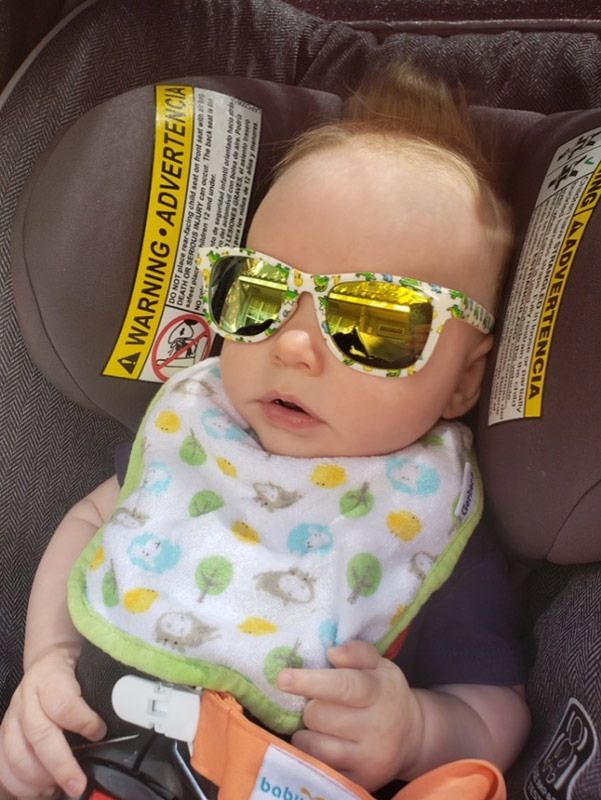By Danielle Crull, ABOM

While many of our eyeglass lenses now provide nearly full UV protection, like polycarbonate and Trivex lenses, they still don’t function like sunglasses do. Photochromic lenses are useful in their own right, but often don’t change in less ideal circumstances, for example, where the sun is prevented from hitting the lenses directly. The truth is, nothing quite works like a good pair of sunglasses. That’s why June 27th, National Sunglass Day, is the perfect opportunity to highlight that sunglasses are not just extra, but part of the standard of care when it comes to eye health.
It’s important to educate families about where sunglasses “shine” in their abilities. The first step is helping parents understand that their child’s eyes are much more susceptible to UV rays than their own eyes. Children’s young crystalline lenses are more transparent allowing more of the damaging rays to reach the retina. It’s also important to let parents know that this effect is cumulative, so the earlier kids start this healthy habit of sun protection the better.
The second step is identifying the differences between standard glasses and sunglasses. Parent’s need to know that when it comes to everyday glasses, we look for a very precise fit. Having frames that are larger than they need to be will only lead to heavier lenses. These extra heavy lenses will be less comfortable for full-time wear.
However, when it comes to sunglasses, we are looking for frames that are designed to give full protection from sunlight overhead as well as sunlight from the sides and reflected sunlight from ground surfaces. This requires a specific shape that is slightly larger, sits close and ideally has a wrap to curve around the sides of the head.
The third point to speak with parents about is how these lenses will help kids in their everyday activities. Most kids LOVE water and spend a good bit of time around the pool and at the beach or lake. Polarized lenses will help kids see into the water, making play time safer and actually improving vision while around those highly reflective surfaces. We tend to highlight sunglasses in the summer, but winter months can be just as dangerous for young eyes. Snow reflects as much as 80% of UV radiation, while sand only reflects about 15%. “So these sunnies your child is getting today will be even more essential in December.” Take National Sunglass Day to the next level by adding some great promotions and sales. Here are a few fun suggestions.
- Offer a discount off prescription sunglasses throughout the month of June. Promote on your social media pages with educational information.
- Give siblings who don’t wear glasses a free pair of non-rx sunglasses or offer them at a reduced rate. It’s better they get them from you than from the local toy store. This helps kids feel a sense of real value and appreciation for their sunwear.
- Offer a sunglasses check up! Have families stop by to have glasses adjustments touched up, screws tightened and checked for scratches and overall lens clarity--before their summer vacation.
- Network with pediatricians, hospitals and baby stores to provide a free sunglass fitting for new babies in the month of June.
Whatever you do to celebrate, make it fun and memorable. If you succeed in both those things you will start a child off on the best path to protect their eyes from the harmful sunlight.










